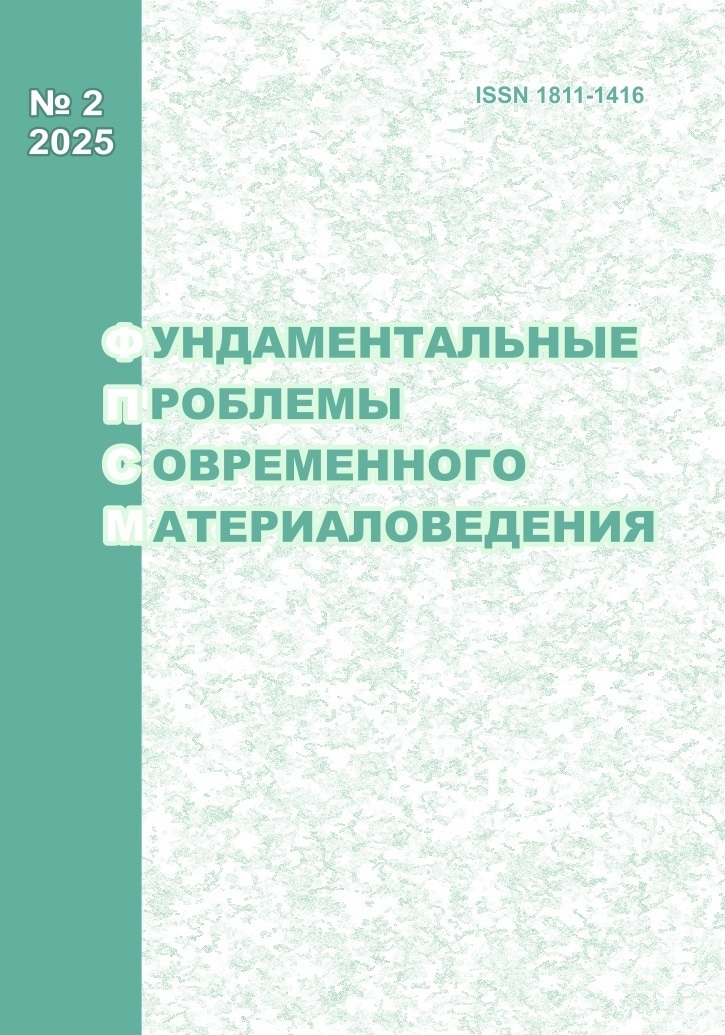STRUCTURE OF ELECTRO-EROSSION-RESISTANT COMPOSITE COATING OF THE TiB2–Ni–Ag SYSTEM OBTAINED BY ELECTRO-EXPLOSIVE SPRAYING
10.25712/ASTU.1811-1416.2025.02.002
Keywords:
composite coating, electro-explosive spraying, microstructure, nanostructure, titanium diboride, nickel, silver, copper substrate, phase, scanning electron microscopy, transmission electron microscopyAbstract
This article discusses the formation of a composite coating based on titanium diboride, silver and nickel, as well as studies of the coating structure at the microcrystalline and nanocrystalline levels. The coating under study was obtained on a copper substrate by simultaneous electrical explosion of silver and nickel foil, as well as titanium diboride powder located on the surface of the foils. The structure was studied using scanning and transmission electron microscopy, and the transition region between the coating and the copper substrate was also studied. The coating has an average thickness of 160 μm and is characterized by a structure with microcrystalline and nanocrystalline titanium diboride inclusions located in a silver- and nickel-based matrix. The nanocrystalline structure of the coating is solid solutions based on copper, nickel and silver in which nanosized particles of titanium diboride are located. The initial stage of decomposition of solid solutions during the formation of any other phases is locally established. In the transition region between the coating and the substrate, the nanocrystalline structure of the coating also represents nanosized particles represented by solid solutions based on copper, silver and nickel. Also, titanium which was formed after partial disintegration of the titanium diboride phase during electro-explosive spraying is included in the solid solution of the nickel-based phase. The silver-based phase fills the gaps between the nickel-based and titanium-based phases. Large particles consisting almost entirely of titanium diboride were also detected in the transition region











 Journal «Fundamental’nye problemy sovremennogo materialovedenia / Basic Problems of Material Science»
Journal «Fundamental’nye problemy sovremennogo materialovedenia / Basic Problems of Material Science» This work is licensed under a
This work is licensed under a 
